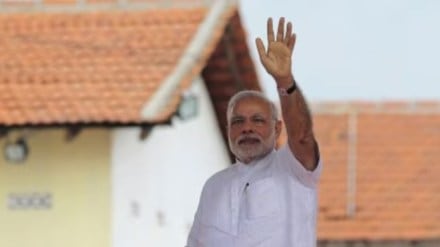Distinguished bureaucrat TV Somanathan recently took over as the new Cabinet secretary. An IAS officer of the 1987 batch, Somanathan has held important positions, both at the Centre and the state government of Tamil Nadu. In recent times, he’s best known for his role as expenditure and finance secretary from where he moved to his new role, which also makes him the head of the civil services.
As KM Chandrasekhar, a former cabinet secretary, writes in his book, As Good as My Word, “To reach the top of the civil service is, by and large, a bridge too far for the majority of civil servants. Most services cannot even aspire to the position.” So, Somanathan certainly needs to be applauded for reaching there.
However, stepping back from matters of protocol, it’s time to examine whether the role of Cabinet secretary has got undermined over the years with the real power shifting to the principal secretary to the Prime Minister. The Cabinet secretary remains the de jure head of civil services but the de facto powers vest with the principal secretary. Is it good, how has it happened, and what is the future of the Cabinet secretary’s role?
Since India opted for a parliamentary system of government, the need for a Cabinet secretary was always there. The office has primarily three roles — serving as secretary for all Cabinet agendas and meetings; coordination with other central ministries; and as head of the civil services handling postings and transfers of civil servants.
Unlike the presidential system of government where the President is directly elected by the people, in the parliamentary system the Prime Minister is the leader of the party that wins a majority in the Lok Sabha. Thus, by nature and definition, the PM is the first among equals — primus inter pares. Therefore, while the Cabinet secretary serves the Cabinet, the principal secretary serves the PM.
As in many other spheres, India adopted the system of having a Cabinet secretary from the British. Before the adoption of the portfolio system in the government of India, the Governor-General in Council disposed of all governmental business, the Council functioning as a joint consultative board. As the amount and complexity of the government’s business increased, the work of various departments was distributed among the members of the Council, with the Governor-General or the Council collectively dealing with only the more important cases.
This procedure was legalised by the Indian Councils Act, 1861, during the time of Lord Canning, leading to the introduction of the portfolio system and the inception of the Executive Council of the Governor-General. The secretariat of the executive council was headed by the private secretary to the viceroy, but he did not attend the council meetings. Lord Willingdon first started the practice of having his private secretary by his side at these meetings. This practice continued and in November 1935, the viceroy’s private secretary was given the additional designation of secretary to the executive council.
According to Chandrasekhar, the link between the viceroy and his council is the reason why the Cabinet secretariat continues to this day, housed in the Rashtrapati Bhavan. The humble beginnings of the position is probably why the room of the Cabinet secretary is markedly smaller than that of secretaries in charge of various ministries and departments, he says.
The inherent tension between the offices of the Cabinet secretary and the principal secretary to the PM is also rooted in history. Chandrasekhar writes that apparently there was a difference of opinion between Jawaharlal Nehru and Sardar Vallabhbhai Patel, with the former preferring a strong Prime Minister’s Office and the latter a strong Cabinet secretariat. This went to Lord Mountbatten, who left it to Nehru to decide. Ultimately, Nehru decided to retain the Cabinet secretariat. Ever since, there has been a sense of unease between the PMO and the Cabinet Secretariat.
Under Indira Gandhi, the PMO became supreme in all matters, and her principal secretary, PN Haksar, emerged as the most powerful official in the government. The committed bureaucracy, later extended to a committed judiciary, was his brainchild.
During PV Narasimha Rao’s time when economic reforms were carried out, the supporting role from the bureaucracy came from his all-powerful principal secretary, AN Verma. Atal Bihari Vajpayee’s principal secretary, Brajesh Mishra, was also the go-to-man for resolution of any conflict over policies or between personalities. In fact, during Vajpayee’s time, the Cabinet secretariat lost the role of coordination of security matters when the position of National Security Advisor was created and Mishra occupied this post also.
During his first term in office (2014-2019), PM Narendra Modi had two key officials in the PMO. While Nripendra Misra served as principal secretary, PK Mishra was the additional principal secretary. The roles were demarcated with Misra overseeing policy and PK Mishra in charge of all appointments. In 2019, Misra stepped down, and Mishra became the principal secretary.
The short point is that whether it’s piloting policies, making appointments, or coordinating with other ministries, the PMO calls the shots. Therefore, the balance of power has swung towards the principal secretary, especially under a strong PM. The position of the Cabinet secretary has become more like the upper house of the Parliament — about which it is said that when it agrees with the lower house it’s being superfluous, and when it disagrees it’s being mischievous.
Of course, personalities matter. The outgoing Cabinet secretary, Rajiv Gauba, did a fine job and protected his turf, and one is sure Somanathan will do no less. However, as the parliamentary system becomes more prime ministerial in nature, the erosion of powers of the Cabinet secretary is a given.
